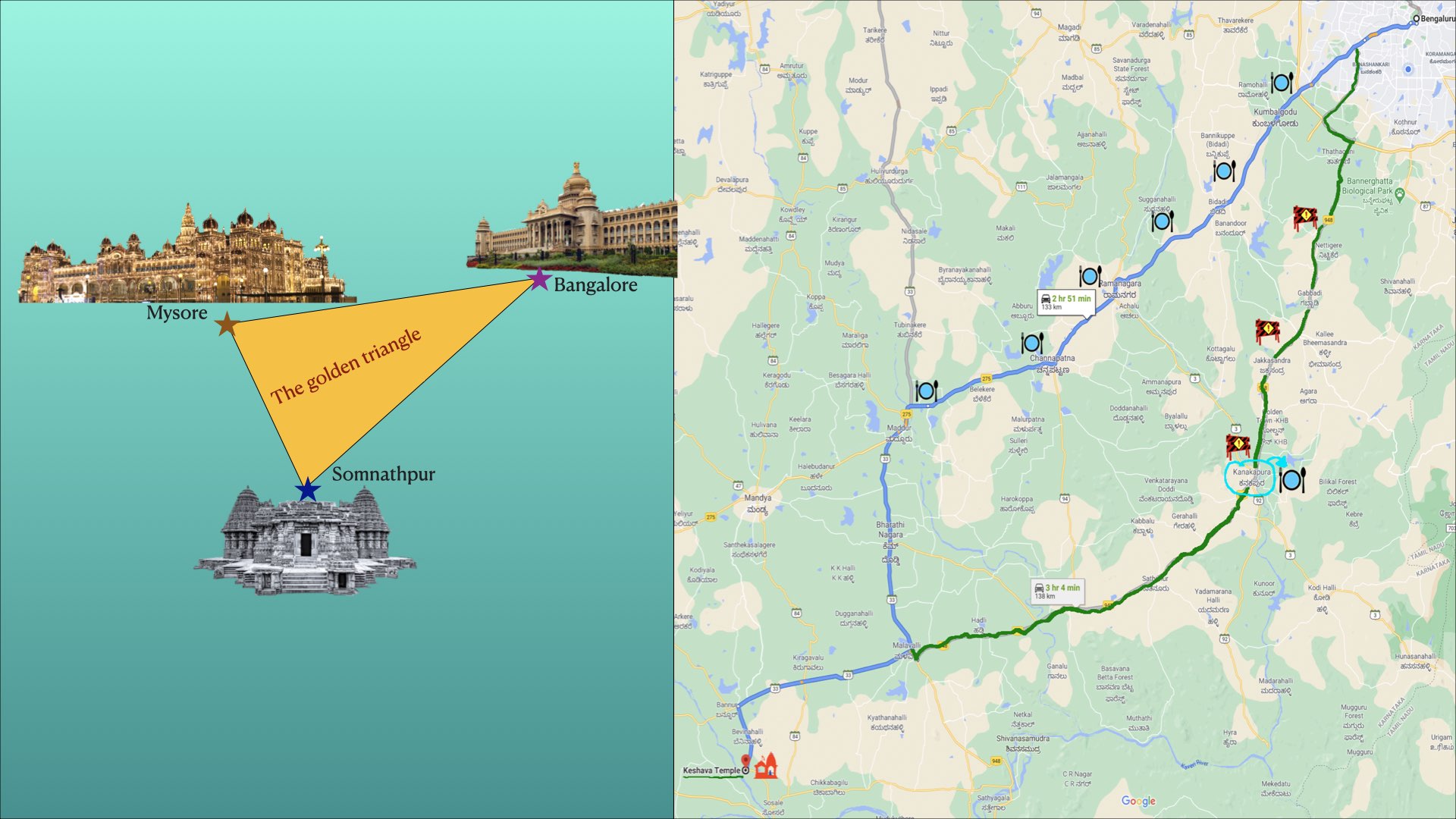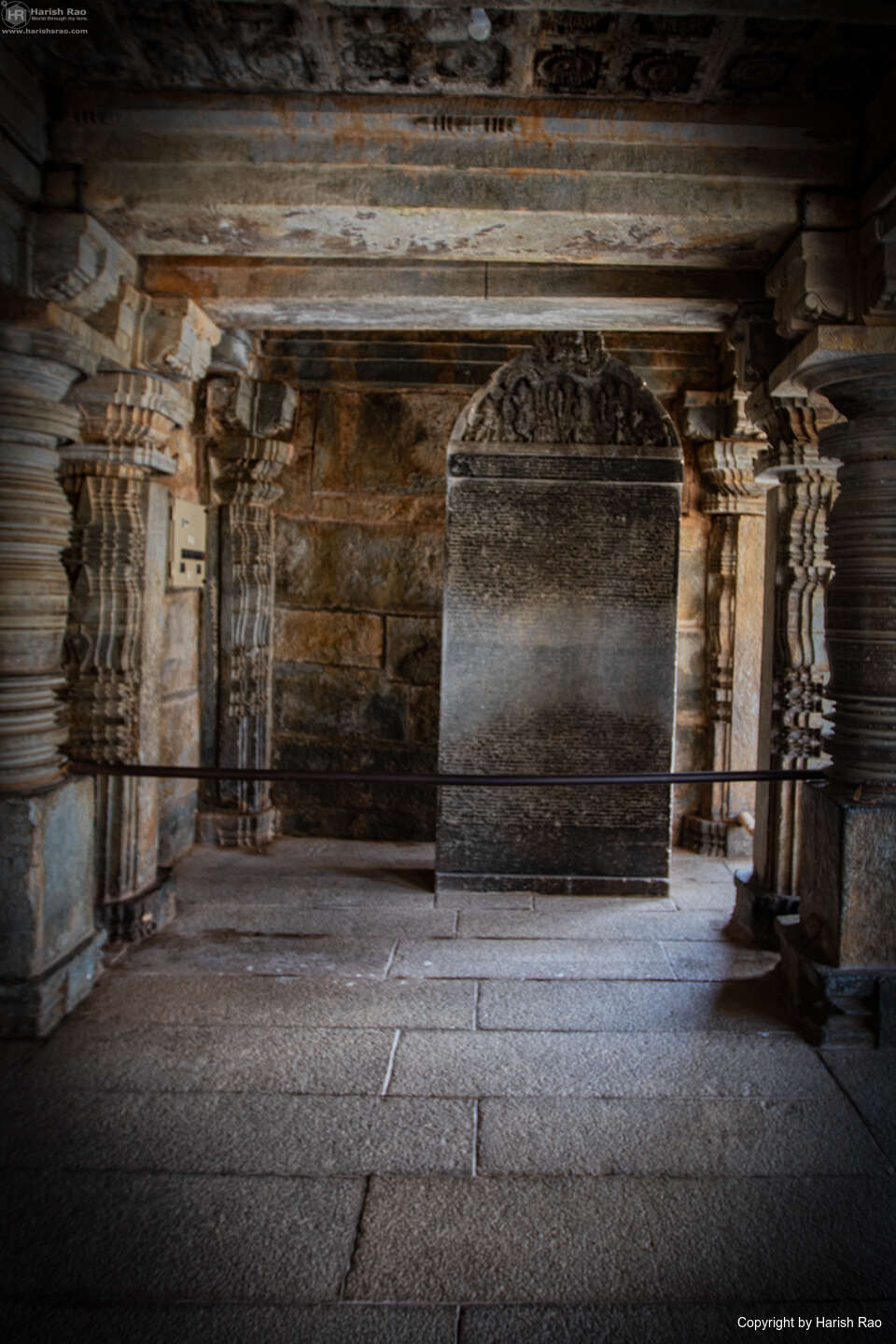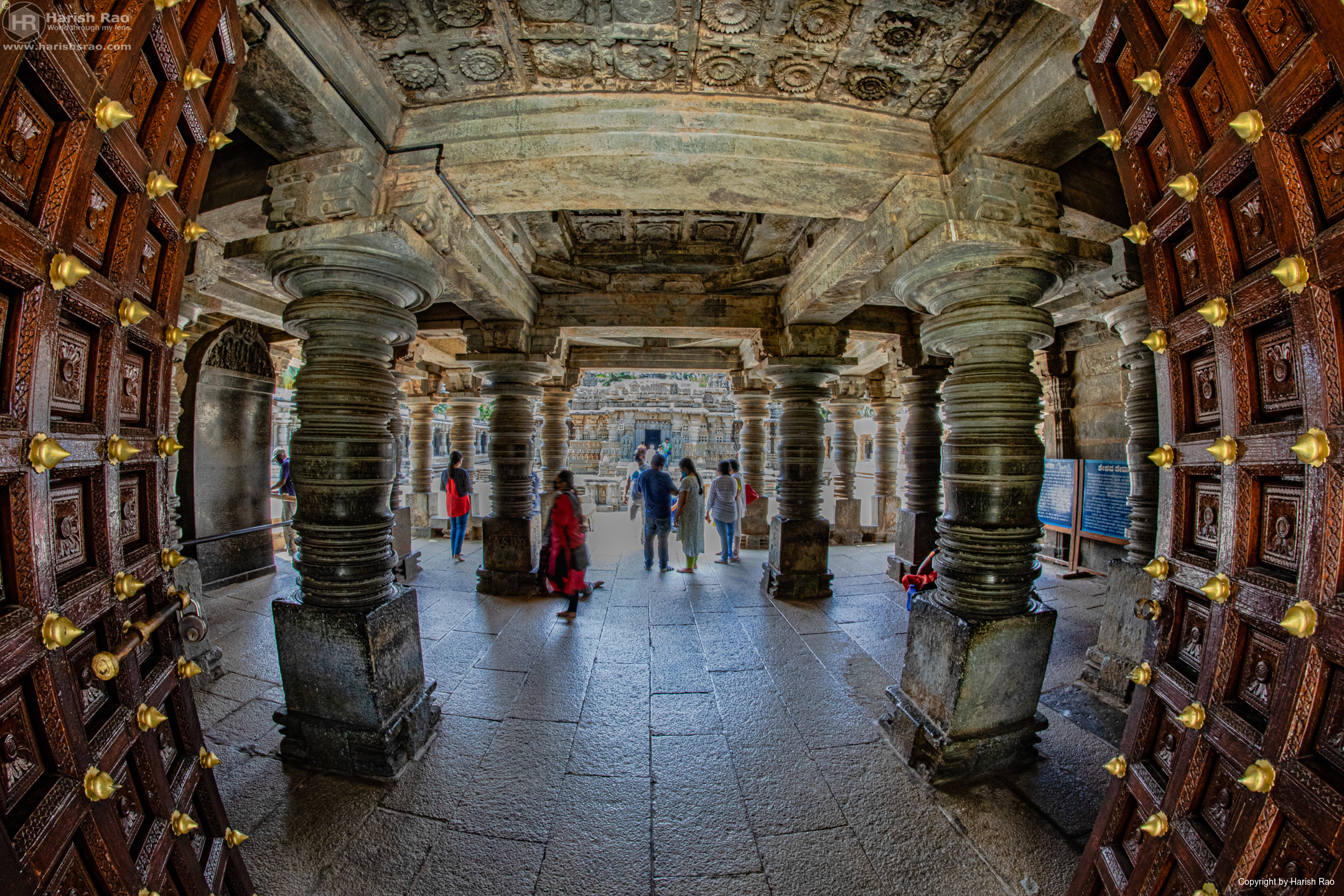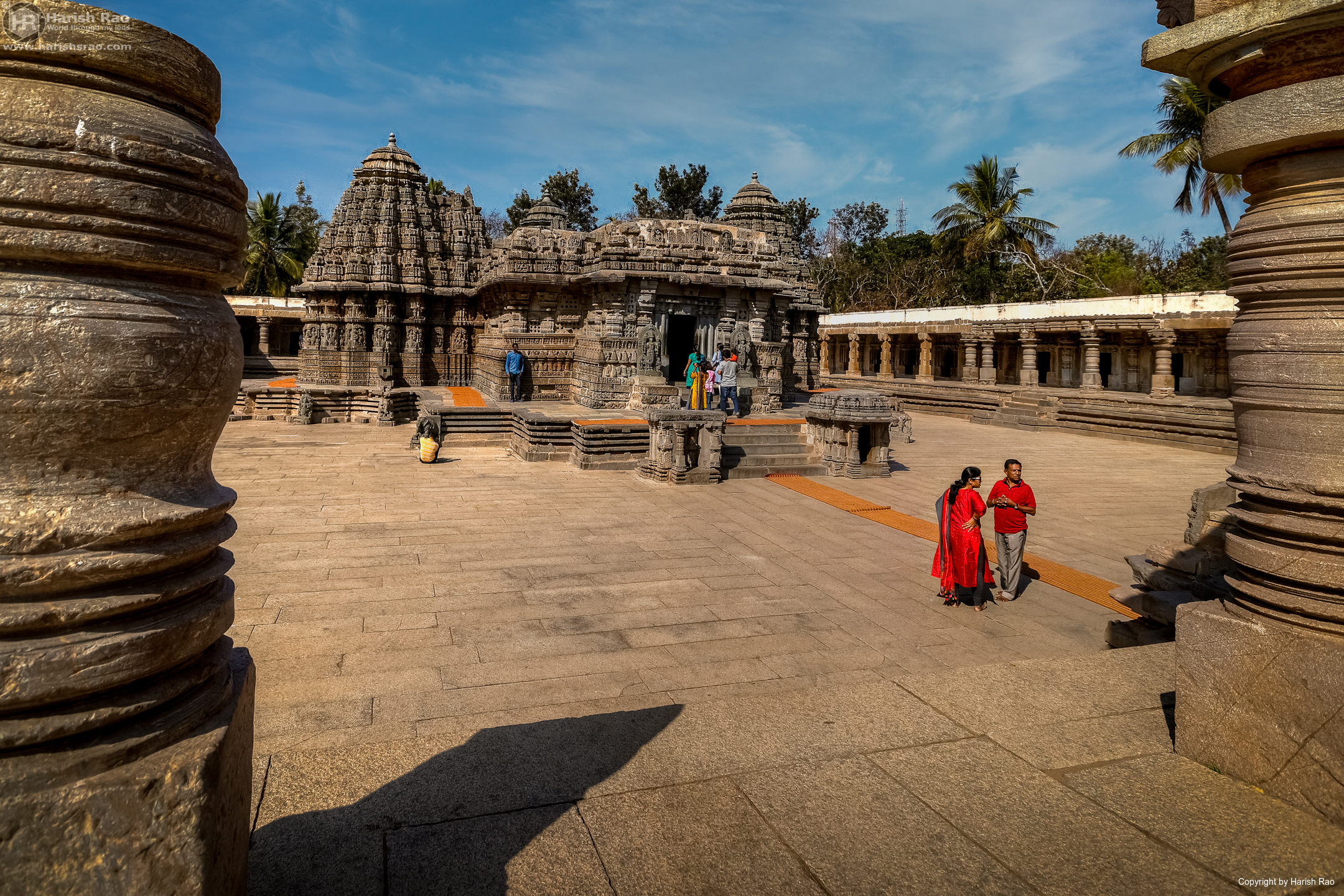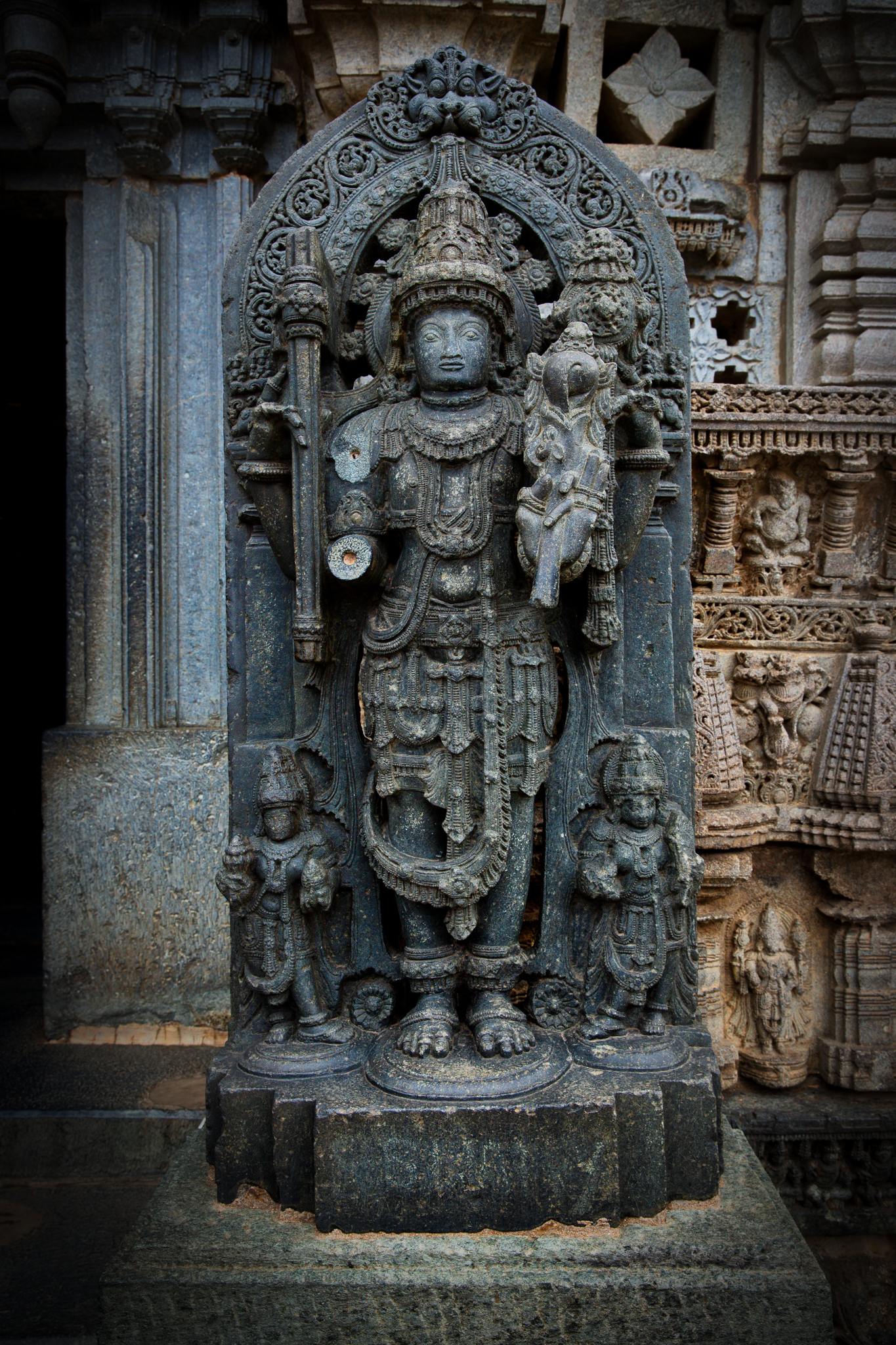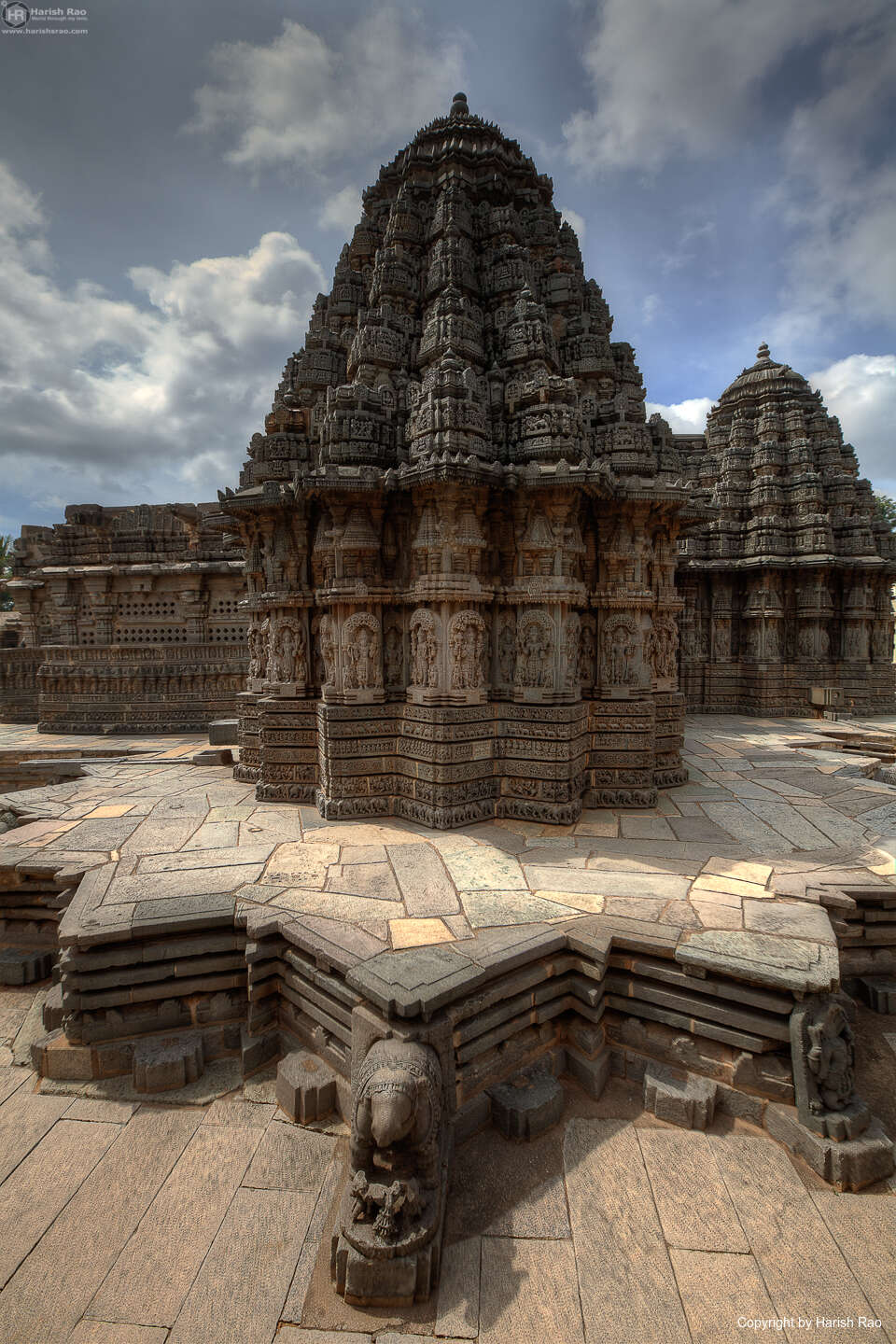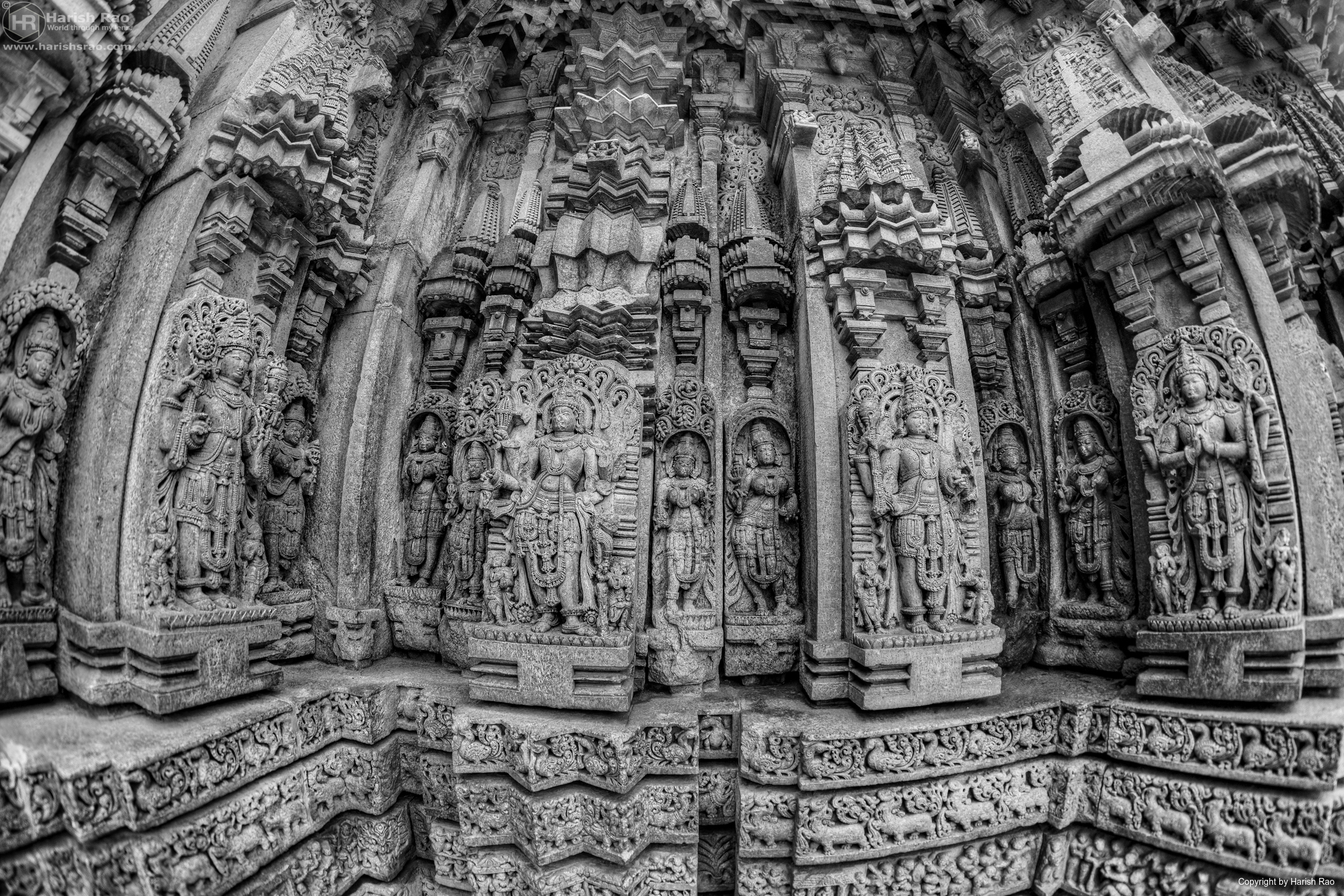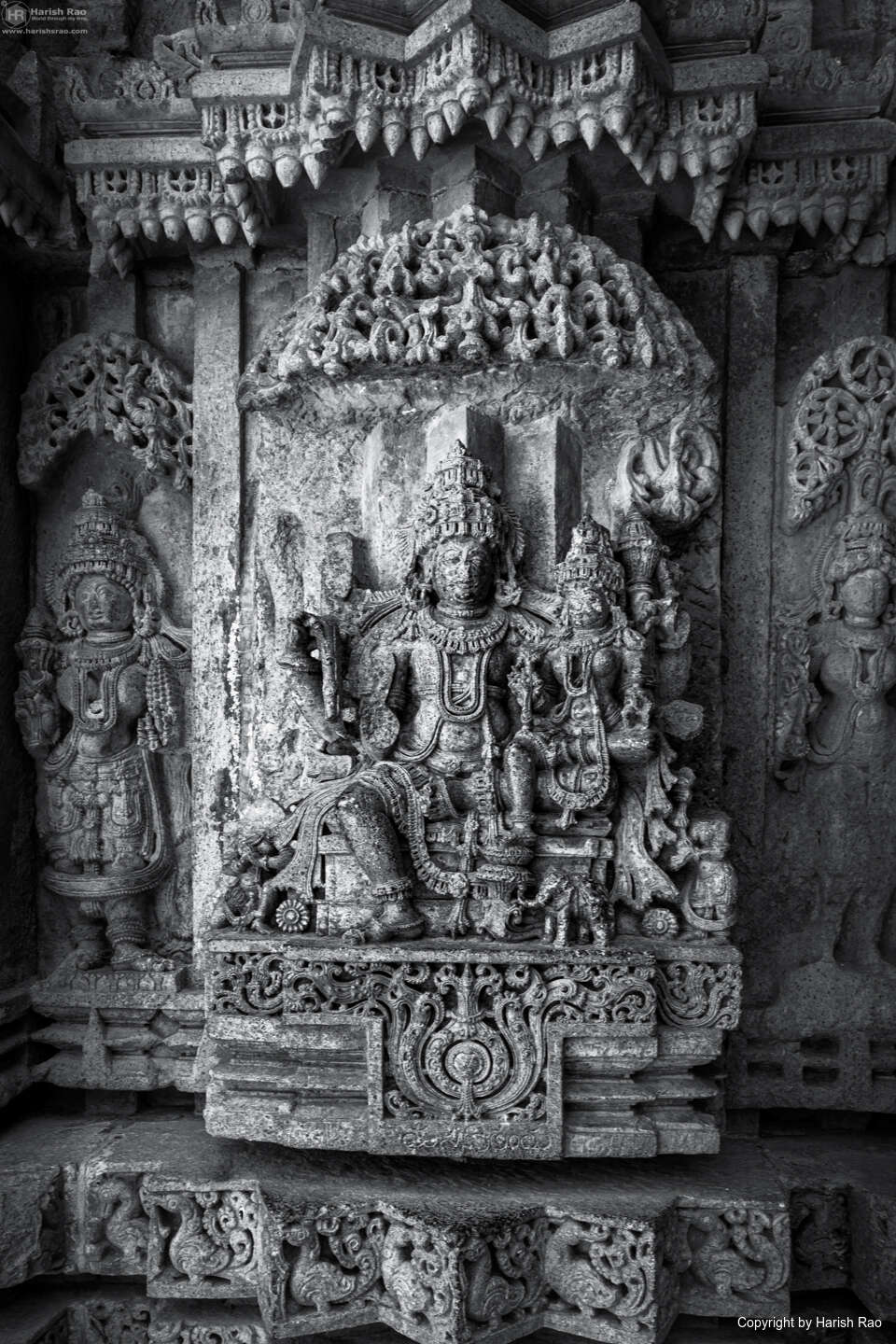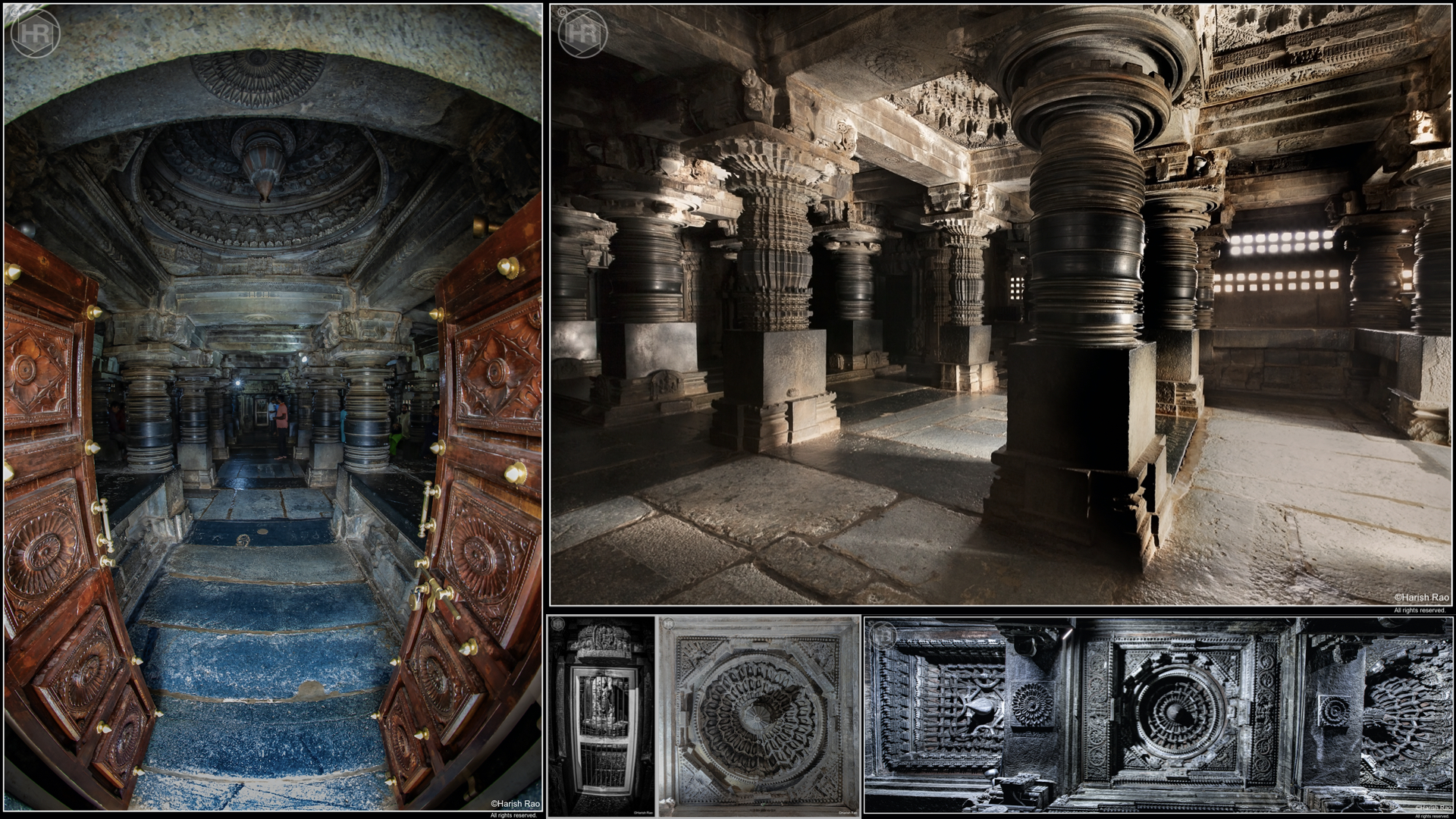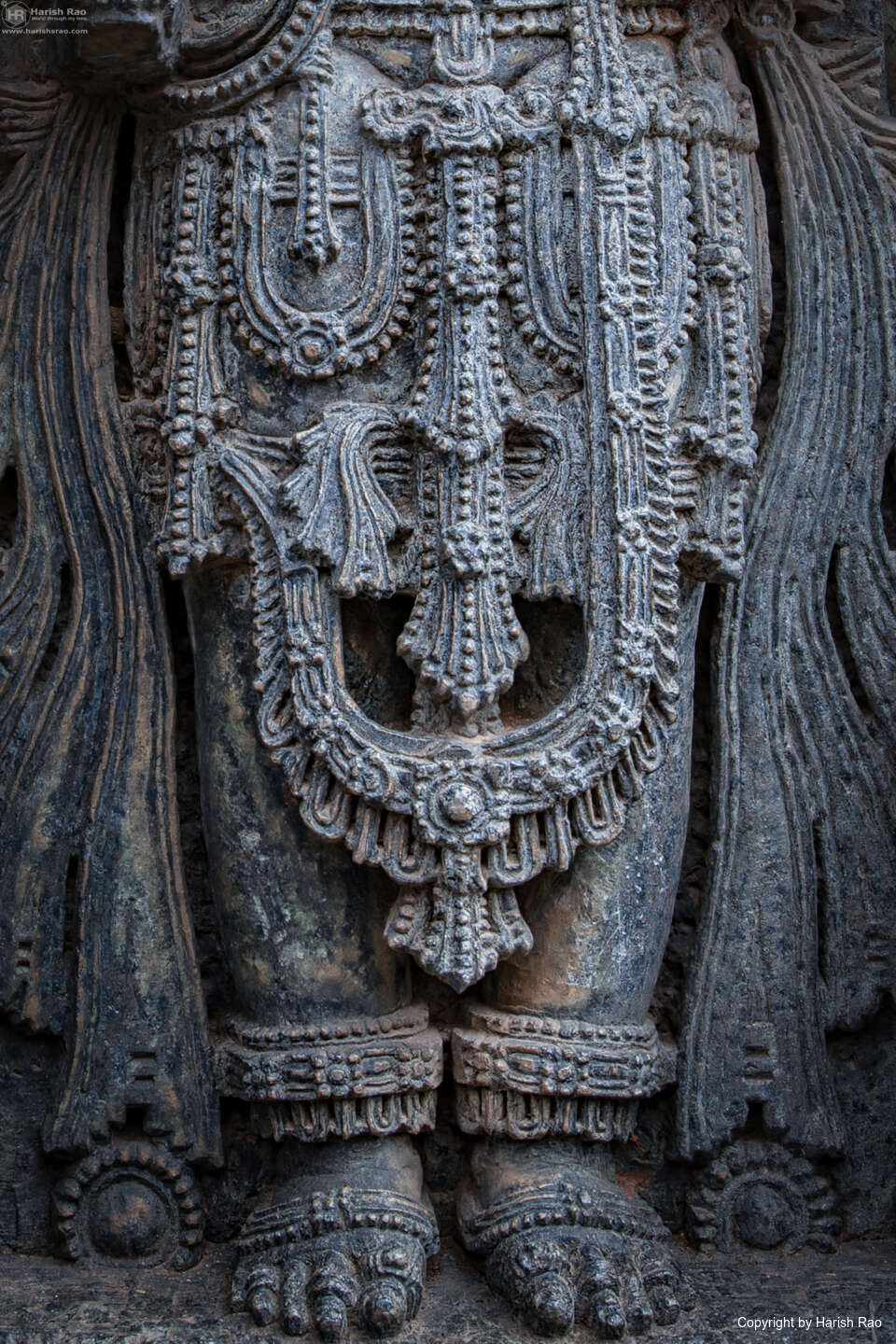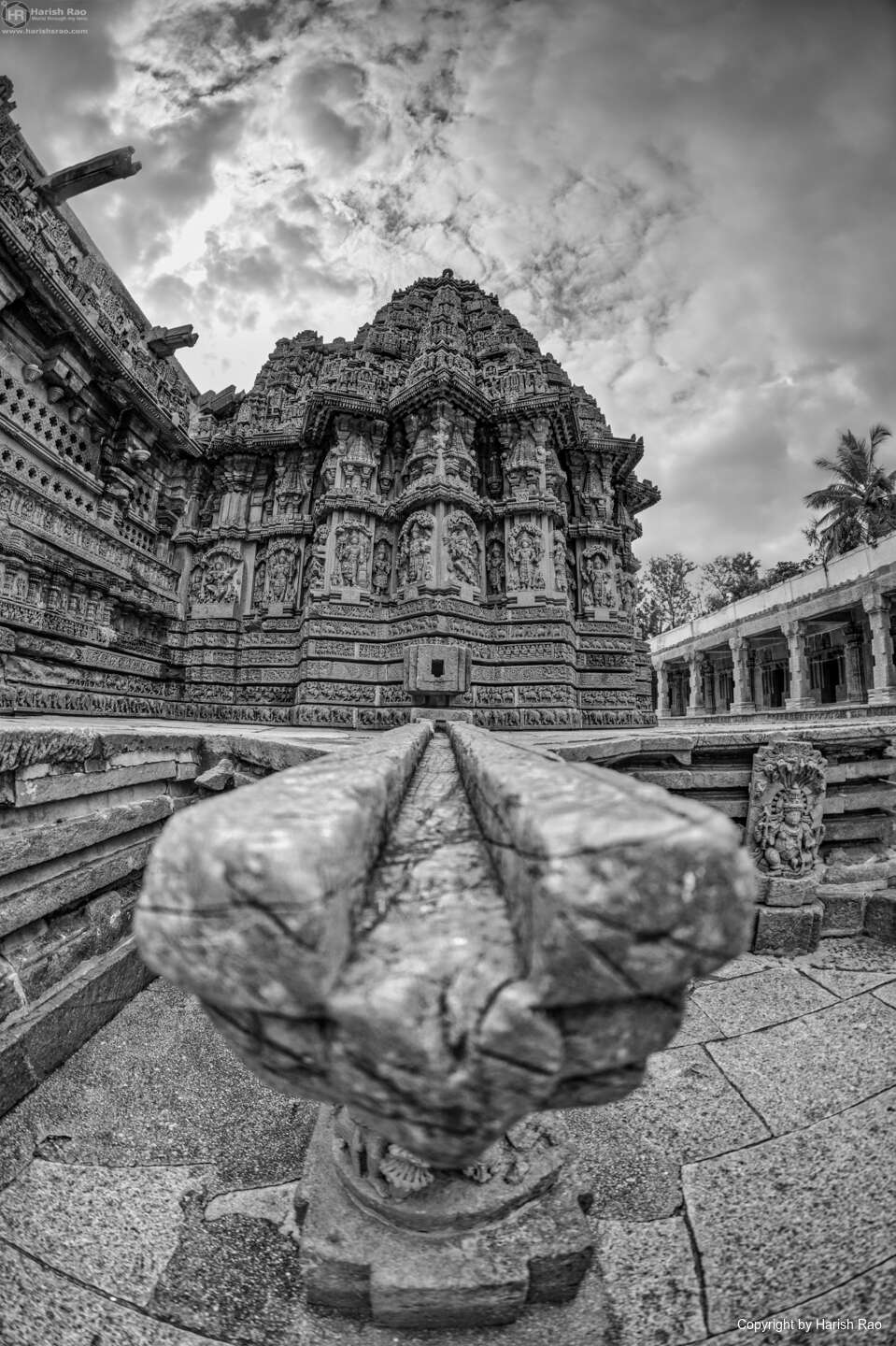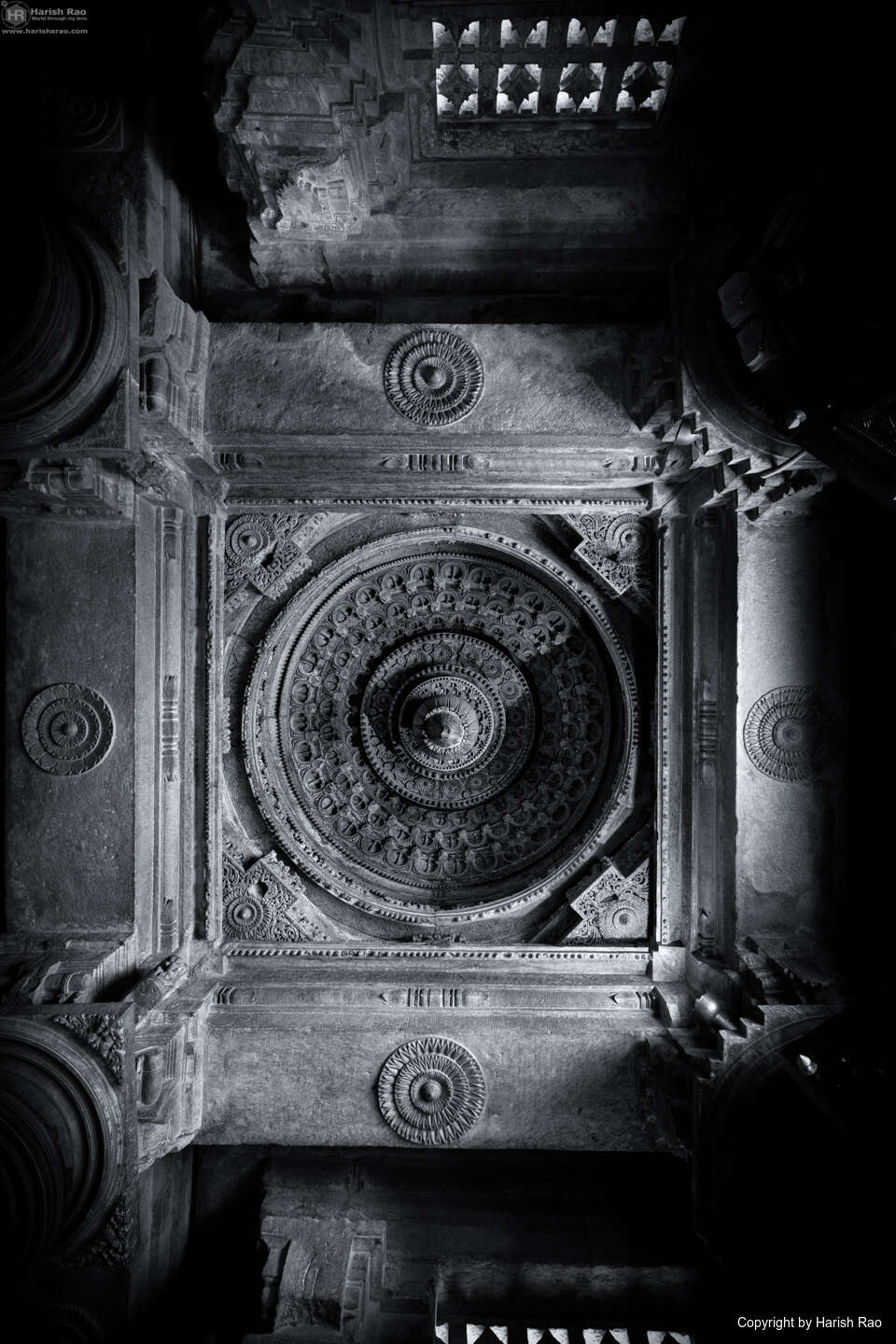
Sri Chennakeshava Temple
Somnathpur.
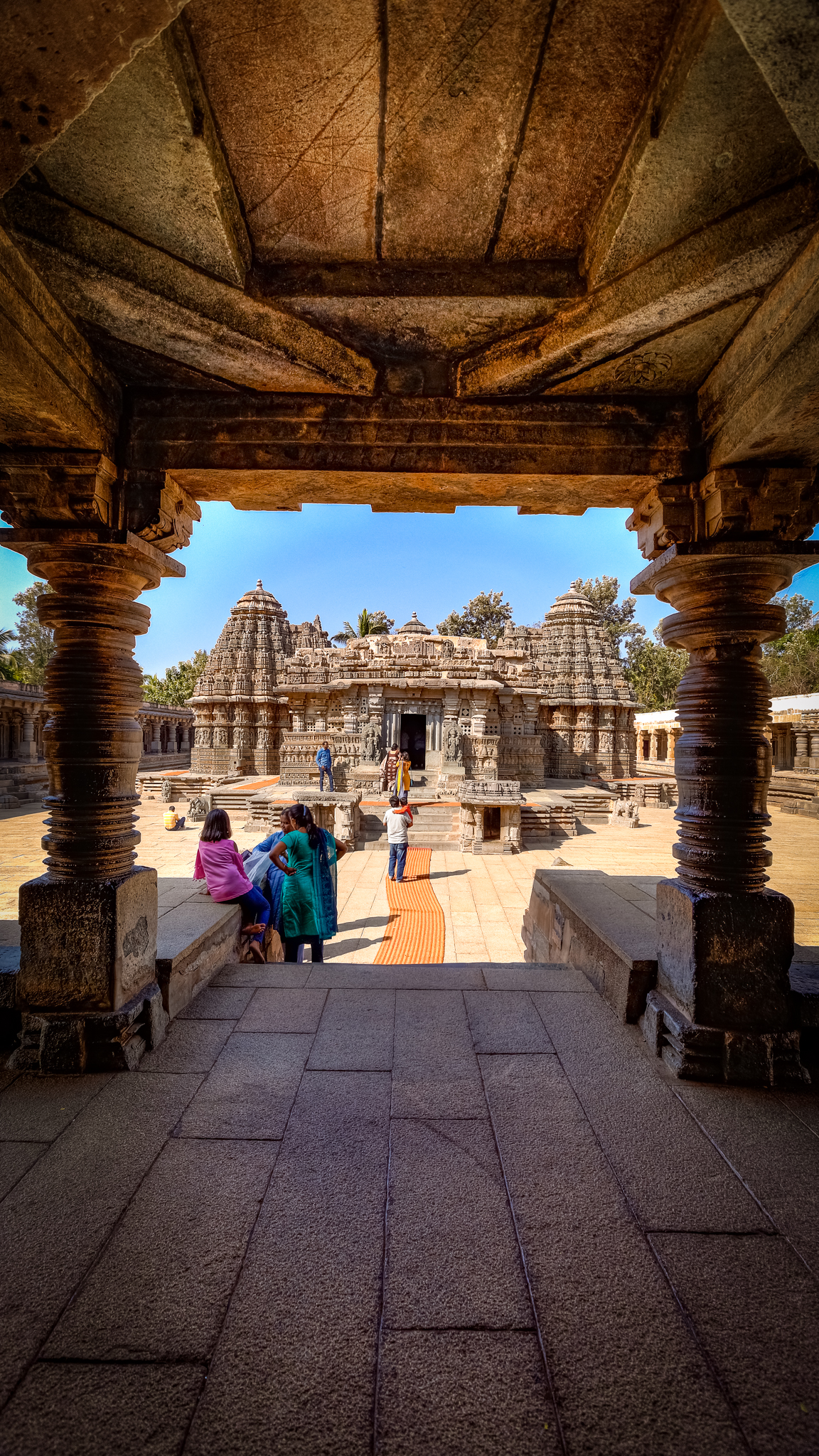
Sri Chennakeshava Temple
Somnathpur.
About Somnathpur:
Located on the banks of Cauvery River, the Somnathpur Temple dedicated to Lord Chennakeshava is third temple after Belur and Halebeedu that is exquisitely built in the Hoysala architectural style. Built in 1268 AD It is the youngest amongst the 3. Somnathpura is a tranquil town located about 35 kms from Mysore or 138 kms from Bangalore. It’s a nice destination for a day trip from Bangalore either by car or on a bike for the more adventurists.
Somnathpur Temple, located in the state of Karnataka, India, is a magnificent example of Hoysala architecture, renowned for its intricate stone carvings and exquisite craftsmanship. Built in the 13th century during the reign of the Hoysala dynasty, this temple is dedicated to Lord Keshava, a form of Lord Vishnu.
The temple is famous for its three sanctuaries, each housing beautifully sculpted idols of deities such as Keshava, Janardhana, and Venugopala. Its outer walls are adorned with intricate friezes depicting scenes from the Ramayana, Mahabharata, and various mythological tales, showcasing the skill and dedication of the artisans of that era.
The star-shaped platform upon which the temple stands adds to its architectural grandeur, while the vimana (tower) above the sanctum sanctorum is a marvel of Hoysala architecture, featuring detailed carvings of gods, goddesses, and celestial beings.
Somnathpur Temple stands as a testament to the rich cultural and architectural heritage of ancient India, drawing visitors from around the world who come to admire its timeless beauty and spiritual significance.
Somnathpur is about 5 kms away from the sacred town of Tirumakudalu Narasipura the temple city of Karnataka, commonly known as T. Narasipura . The first name refers to the land at the confluence of the Kaveri, Kabini and Spatika Sarovara a mythical lake. This is the place in South India where Kumbhamela is held every three years. Considered as sacred as Prayag, Tirumakudalu is also known as Dakshina Kashi .
There are two routes to Somnathpur from Bangalore . one using the Bangalore -Mysore highway , the other via Kanakapura and both are equally strenuous over the weekend due to the current road construction work. The good thing about Mysore road route is there are a number of good eateries all along the way while on the other route you better finish your breakfast at Kanakapura.
The temple opens at 8:30 am . Online ticketing has been made available to promote touchless ticketing to safeguard from the pandemic . The tickets are available at: https://asi.payumoney.com/
Most ASI maintained temples have the walkway from the temple ticketing centre to the temple laid out with well maintained lawn sprawled on both sides. This temple is no exception.
The construction of the temple was completed in 1268, by Somanatha Dandanayaka who was the General for King Narasimha III during the Hoysala reign. He constructed this temple to seek the blessings of the lord Vishnu and to showcase the enviable brilliance of Hoysala architecture and represent its grandeur and intricate craftsmanship. Though Somanatha means Shiva, still this temple is predominantly a Vishnu temple.
The Temple features a Deepastambha in front of it. The Deepastambha, or lamp pillar, stands as a symbolic representation of enlightenment and spiritual illumination. It serves as a prominent element in the temple complex, often adorned with intricate carvings and designs characteristic of the Hoysala style of architecture. The Deepastambha plays a significant role in religious ceremonies and rituals, adding to the spiritual ambiance of the temple surroundings. Outside the Mahadwara (main gate)of the East facing temple , stands a tall pillar, which once had a Garuda statue on top which is now missing.The Deepastambha once had a Garuda statue on top which is now missing.
The small entrance hall is supported by lathe-carved soapstone pillars. The pillars and carvings in the entire temple is made from soapstone, a green-grey chloritic schist material that is soft in quarry but hardens with time and exposure to atmosphere. This stone is not locally available and must have been imported from other parts of South India.
To the left of the entrance is the 2.8 metre high vertical inscription stone. The stone is inscribed in old Kannada characters and gives details about the patrons and the details of the Pooja performed by the priests for the 3 deities Keshava, Janardhana and Venugopala. A scaled model of all the 3 deities are carved out on the top semi circular part of the inscription stone.
At the entrance of the Chennakesava Temple, you’ll find two imposing statues known as Jaya and Vijaya. These are the dwarapalakas or gatekeepers. Jaya and Vijaya are often depicted as fierce warriors, standing on either side of the main entrance. They symbolize protection and guardianship.Their purpose is to safeguard the sanctum and prevent any negative energies from entering the sacred space.These intricately carved statues are not only functional but also serve as artistic masterpieces, showcasing the skill of Hoysala artisans.
Once you cross the entrance hall you can view the grandeur of the magnificent temple. This temple is built with perfect symmetry. Like many other Hoysala temples, this temple is also built on a star shaped platform raised by 3 feet which is called Jagati. Each star needs 12 corners for completion. The Somnathpur temple is constructed in Trikoota formations which means there are three Garbhagudi or 3 deities. Belur is Ekakoota and Halebeedu is Dwikoota. Each koota is built on star shaped foundation that has 12 corners. As Somnathpur temple is Trikoota, there are 36 corners on the 3 star formation.
The raised jagati platform circles around the main temple with a broad walking space called the pradakshina patha (circumambulation path) that is provided for the visitors to go round the temple in a clockwise direction. This helps the visitors to pictorially read the Ramayana, Mahabharata and Bhagavata Purana legends in the correct sequence.
Built on 36 point star shape, the three shrines of the temple have been built in perfect symmetry, each with their Vimana (the structure above the star shaped platform) and Sukanasi (the tapering tower over each Garbhagudi).
The outer wall of the main temple consists of parallel horizontal bands of artwork carved above the circumambulatory platform. The lowest band in the basement section is about 6 inches tall and shows a row of elephants mostly marching to the left in the clockwise direction the devotee is expected to walk.
Above the basement band , are rows of small size deity reliefs that wraps around only the sabha mantapa part of the main temple. Most of these are defaced and damaged. Some are difficult to identify.
The reliefs show common life of the people that include festive scenes, dancers in various mudras, musicians with 13th century musical instruments, couples in courtship and sexual scenes, mothers nurturing babies, hunters and other professionals with pets such as dogs, soldiers, yogi, rishi, individuals in namaste posture, couples praying and others. These reliefs also include numerous friezes showing the story of Prahlada, Hiranyakashipu and Vishnu avatar Narasimha.
The main temple sanctum is entered from its east doorway. Inside the door is the Navaranga with the usual nine squares suggested by ancient Hindu texts on temple design.
The main temple sanctum is entered from its east doorway. Inside the door is the Navaranga with the usual nine squares suggested by ancient Hindu texts on temple design.
Belur, Halebeedu and Somnathpur are the three Hoysala temples , where you can spend a full day taking pictures and on return when you process the pictures you realise that you have still missed some parts of it. I have been to Somnathpur at least 7-8 times and the last 4 visits have been specifically with the intention of capturing pictures for this story. I still could not get a decent quality picture of the deities inside the main hall due to challenging lighting conditions. So I am sure there is another trip coming up shortly.
You go to these three places and you return sad thinking what kind of people were they who had the heart to inflict systematic irreversible damage on such beautiful piece of art that took hundreds of years to build. The Archeological Survey of India has done a great job of maintaining this monument over the years. It is for us now to handle it with care and preserve this wonder for our next generations to enjoy as this level to artistry will not be recreated again.
Cheers,
Harish !



